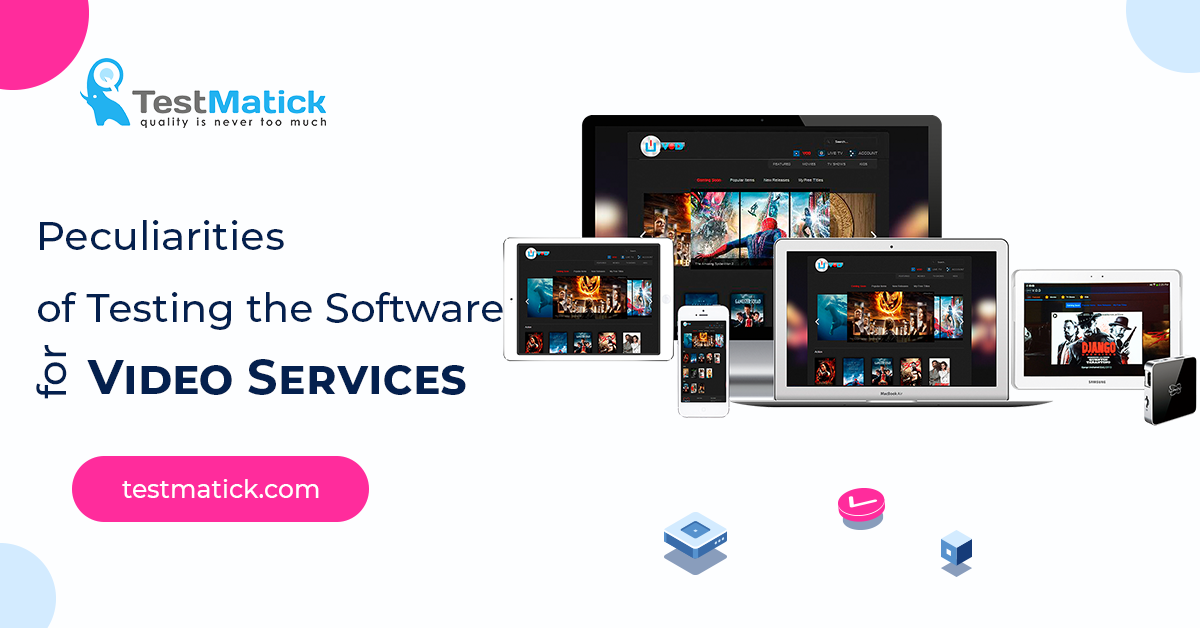We cannot imagine our everyday life without streaming video on demand. Video on Demand is a special system of delivering the media content which gives users an option to watch the content on any device and at any time.
Some parts of the Internet traffic use its data for playing audio and video content. Increasing the information rate provokes total usage of multimedia as a basic source of information among people who interact with each other via the global network.
The main thing in such a situation is the process of ensuring the uninterrupted work of media content. The quality of played material is a decisive factor when the user chooses a digital plane for media resource usage.
Further, we will talk about actual moments in web application testing for video service’s needs, and more specifically, we will analyze the peculiarities of player performance testing.
Why Is Player Functional Testing so Important?
The process of testing is not something unknown but video service work is based on a special logic that has its tasks and functions.
So, the main task of any video service is providing a qualitative picture to the end-users and making their interaction with a service as easy as possible. Moreover, the site can be used as a special marketing tool.
In other words, we need to execute performance testing of the video service in order the user could enjoy:
- A huge amount of processed Internet traffic;
- Safe streaming data transmission even if there is a poor Internet connection;
- Watching the media content on any device;
- Usage of paid software on several browsers simultaneously (full compatibility in real-time).
But all these qualities can be tested only on the basis of test cases which include all necessary conditions of functioning. It means that you cannot do it without various kinds of testing the streaming programs.
Now, we will wander from the subject a little.
How Does the End-User Get the Content?
So, today all license holders have a digital distribution department. It shares content sources in a special format with settings for audio and video records. These sources are going to the special department which checks if everything works fine and qualitatively. After this, everything is going to the coding department, end then the content gets to the servers.
Finally, end-user can receive digital content from those servers.
What About Pirates?
IT development requires improving the protection of digital content from pirates.
Thus, at the stage after technical content processing, it comes to Digital Rights Management (DRM), a special system that can protect the content from unlicensed copying.
DRM can be considered as a key that is difficult to break. You can get access to it only if you buy a license on the project.
Now, we can proceed with the basic moments of video service performance testing.
Software Performance Testing for Video Service’s Needs
Obviously, there is no universal DRM key for all the content.
Every browser has its own DRM. And this is not a developer’s decision but a simple need because Safari does not have Widevine technical support, as well as Google cannot work with FairPlay.
That is why we need to perform exhaustive cross-browser testing.Player testing requires analysis of many factors. Except for device, browser, and software, QA specialist should take into account the condition of technical broadcasting (for example, to check the potential channel capacity).
Player testing is based on the capability to support one player simultaneously: in such browsers like Safari and IE11 – a negative one, based on FairPlay; for others – HTML player on the CENC platform.
What Issues Can Be There?
- Testing for the cross-browser VOD interoperation – work with all the popular browsers; compatibility testing with some browser (a full combination of possible browser versions and end-user’s operating system); the option to use virtual windows and emulators during the app performance in real-time.
- Continuous content playback on different platforms – providing stable service performance on different devices.
- Online customizing of the stream according to the current network capacity.
- Performance of load testing – even if you are confident that tested products can cope with peak demands, you have to execute thorough tests to see the potential level of the lowest and the highest software performance.
An Inside Look or Principle of Player Operation
So, we already know how the content is delivered and the principles of its protection. What is next? What happens when a user, for example, starts watching a film or video?
Immediately, right after the end-user buys content, he/she gets personalized access to the viewing. During the request for viewing, the player demands a particular XML rule of how the player should show the playlist in one format in the future.
Also, the DRM manager connects right after, and it demands the capability to manage the playback license because the rest of it was got inside the XML rule.
The server gets the session key. When the player gets this key, it begins to decode the flow, and the user can enjoy the content that he/she bought.
Some problems can happen at any stage, described above. Every incoming request is a potential system failure. And these moments should be tested thoroughly. For example:
- Problems with content: cracked license, bugs at the coding stage;
- Inability to contact a server.
Conclusion
Web application testing for video services differs from web site testing. All these technical moments make automation testing more difficult and create a lot of test cases that should be implemented in order to get a qualitative and easy-to-use web product.










Leave A Comment